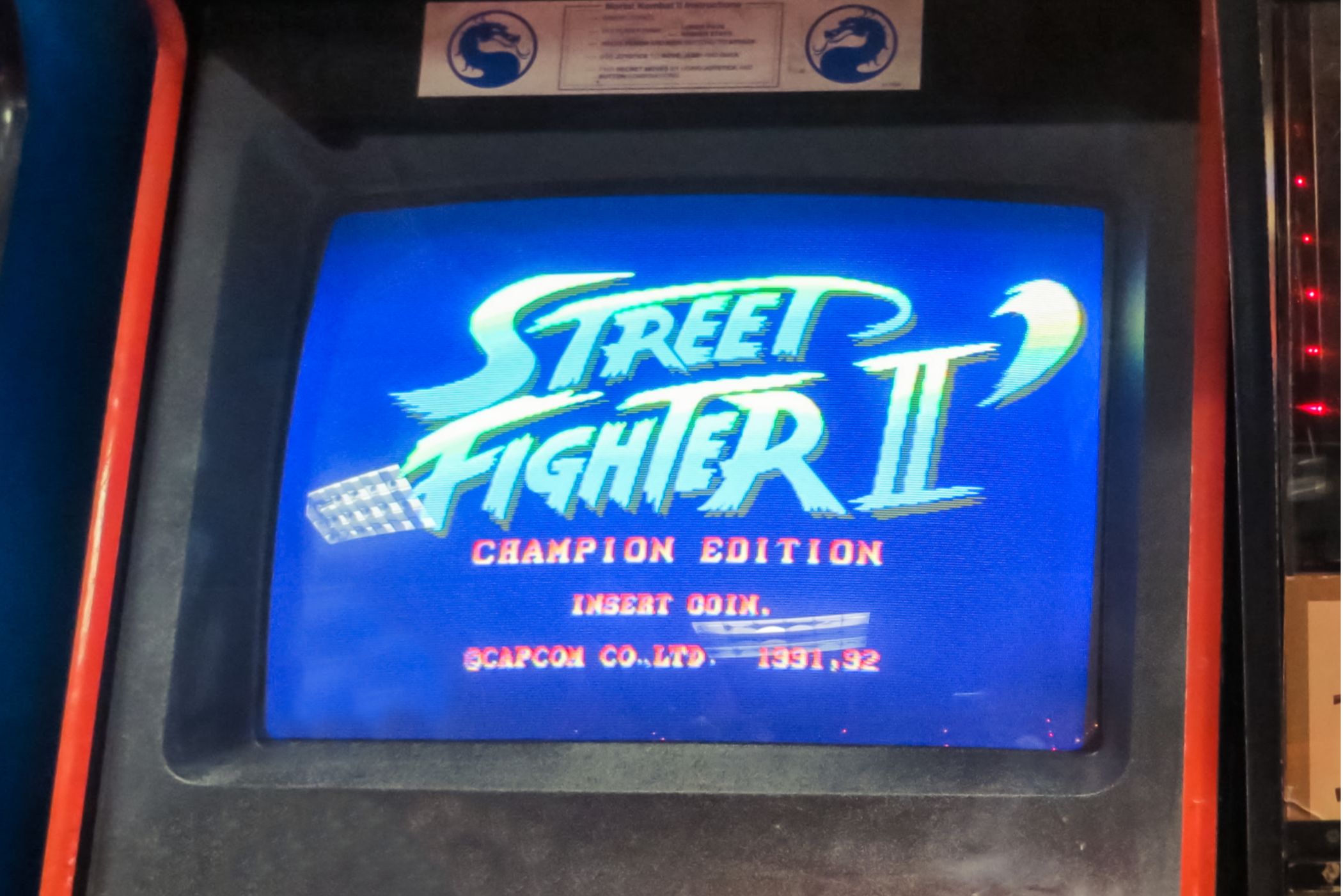Tech News
How Video Game "Clones" Created the Games We Love Today
Key Takeaways
For every original video game that becomes a monumental hit or revolutionizes the industry, you can be sure that hundreds of similar "clones" will follow. While some of these clones are blatant knockoffs, the rest are more important than you might think.
What Are Video Game Clones?
In the early days of the video game industry, programmers and game designers didn't have many examples to follow. It was a budding new medium, and most developers that helped build it from the ground up had to rely on entirely original ideas. This wasn't the case for all early developers, as many amateur creators took advantage of the fact that game copyright laws barely existed in the 70s and 80s.
Plenty of popular video games such as Donkey Kong, Breakout, and Space Invaders were succeeded by waves of unlicensed imitators. Apart from minor sprite changes and legally distinct titles—such as Artic International's Puckman, a not-so-subtle knockoff of Pac-Man—many of these games were nearly identical to the games they copied. This blatant plagiarism led to these games earning a heap of lawsuits and being labeled as "clones" of more popular titles.
Some early clones managed to find more success than the original games. Pong on the Atari 2600 was a clone of the Magnavox Odyseys's Table Tennis. Later on, Atari's own original games were copied by games from other companies like Taito, who developed the Breakout-inspired Arkanoids. Similarly, you've likely never heard of Blockade from 1976, but there's a good chance you've played at least one of its countless knockoffs, such as Snake, Nibbler, or Slither.io.
Near-identical clones of popular video games gradually died down in the late 80s due to companies becoming more protective of their original ideas and taking legal action to enforce their patents. However, that didn't stop developers from using each other's ideas.
Throughout the 90s, new releases and shifting gaming trends helped redefine the concept of a video game clone. Instead of being a straightforward imitation of another game, this type of clone refers to a game that copies the mechanics of another title while varying other aspects such as presentation, story, and level design.
In most cases, these clones didn't rely on plagiarism or stolen assets, but their obvious attempts at replicating the success of more popular titles made them divisive among players.
If you've ever heard someone refer to a game as a "clone", they were likely using the second definition. Doom clones, Pokémon clones, and clones of other popular games were widespread throughout the early 90s and 2000s. While it's easy to dismiss many of these titles as lesser versions of your favorite games, clones played an important role in shaping the modern game industry.
Clones Kickstarted Most Video Game Genres
Clones represent a dilemma that's unique to video games. Whenever a game delivers a fresh and innovative concept that doesn't neatly fit into a pre-established genre, every other game that follows in its example is often regarded as a clone. While these games are initially criticized for taking ideas from other games, they often become the foundation for brand-new genres.
First-person shooter (FPS) games existed before Wolfenstein 3D and Doom—they were preceded by Maze War (1973) and Battlezone (1980)—but id Software's iconic shooters were responsible for defining the 90s FPS formula.
At the time of their release, the first-person shooter genre had yet to be properly established, and most of the games that followed didn't stray far from the mechanics and level design of id's shooters. It may sound reductive to call all early 90s shooters "Doom clones", but it was an accurate description of Doom's massive influence on the genre.
That gradually changed as first-person shooters started to improve upon Doom's formula. Duke Nukem 3D famously brought a new degree of environmental interactivity to the genre, and the Marathon series showcased the genre's capability for elaborate storytelling.
The "Doom Clone" label gradually died, as first-person shooters shifted away from id Software's original formula. The rise of tactical shooters like Rainbow Six, story-driven shooters like Half-Life, and multiplayer arena shooters such as id's own Quake all proved that the FPS genre is comprised of more than just Doom clones.
This story isn't unique to first-person shooters. Much like Doom, Street Fighter II wasn't the first in its genre, but it laid a foundation for future fighting games to follow. However, Street Fighter clones were fiercely competitive and constantly trying to one-up each other.
Unlike first-person shooters, Street Fighter clones feuded for players' attention in arcades. This forced new developers to find ways to innovate and distinguish themselves, while the titans of the genre—Capcom and SNK—had to adapt to the increasing standards through a steady stream of new games.
Street Fighter clones were a mixed bag of quality, ranging from cheap imitations like Fighter's History to all-time classics like Mortal Kombat and the criminally underrated Breakers series. Regardless of their quality, clones forced the genre to rapidly evolve, which helped them escape their "clone" status and gain recognition as a proper genre well before first-person shooters.
Even Street Fighter II received multiple updated re-releases to compete with the games it directly inspired.
Although it only takes a single game to introduce a new idea, it takes a swarm of clones to grow that idea into an entire genre. Clones validate new gameplay concepts by not only affirming that they're worth copying, but also proving that these ideas can be further developed and refined beyond their original appearance.
Without Doom clones to push the genre forward, we likely wouldn't have ever received genre-defining classics like Halo, Call of Duty, or the countless boomer shooters that have been released in recent years.
The same can be said for other genres that spawned from clones. Kart racers began as Mario Kart clones, farming simulators as Harvest Moon clones, open-world shooters as Grand Theft Auto clones, and the list goes on. Without other developers to build on their ideas and properly establish these genres, it's unlikely that any of these series would be as prolific as they are today.
Every successful gaming franchise learns from its imitators, and the gaming industry has constantly improved as a result. Fresh ideas thrive under new genres and further develop through unique twists that can inspire their own sub-genres.
Clones Are Still Shaping the Gaming Landscape
Gaming genres are much better defined than they were in the 80s and 90s, but new genres are still being established through the "cloning" process. Perhaps the most successful recent example is the battle royale genre, which started with PlayerUnknown's Battlegrounds (PUBG) but was quickly overtaken by PUBG clones such as Fortnite and Call of Duty: Warzone. Today, these imitators are far more recognizable than the game that inspired them.
In most cases, modern gaming has moved away from dismissing games as "clones," and for a good reason. Soulslikes, Metroidvanias, and roguelikes all borrow familiar mechanics and design elements from their namesakes, but these genres now encompass far more than just straightforward imitations of the original titles. Many modern games in these genres share little resemblance with their inspirations. This is especially true for roguelikes, which are defined by their uniquely punishing progression rather than a specific style of gameplay.
Even recently-established categories like the Bullet-Heaven genre—games inspired by Vampire Survivors—quickly stopped being labeled as clones due to the sheer influx of new releases. Thanks to the growing prominence of indie development, more games are being released than ever before, which has also led to genres evolving at a rapid pace.
The modern gaming industry rarely allows new ideas to stagnate, as other developers are constantly finding new ways to improve or fully reinvent these ideas with their own exciting twists.
Despite a reputation for unoriginal or outright plagiarized releases, "clones" have been some of the most important games in the gaming industry. They're responsible for the creation and advancement of almost every gaming genre, and they continue to influence the gaming landscape to this day.
Although usage of the term has gradually died down in recent years, clones are still shaping the medium one copycat at a time.
When you subscribe to the blog, we will send you an e-mail when there are new updates on the site so you wouldn't miss them.


 id
Software/3D
Realms
id
Software/3D
Realms
 Epic
Games
Epic
Games
Comments